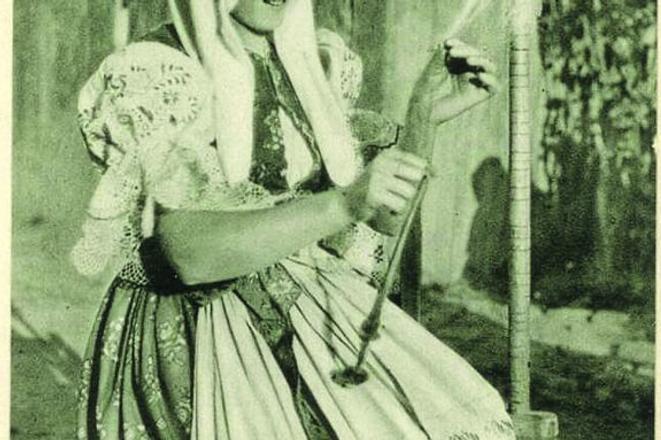AS LATE as the 1950s in some regions of Slovakia you could still see women spinning textiles, as shown in this postcard. The lady is married (as she wears a headscarf) and comes from the municipality of Plavnica, in the Šariš region.
Spinning meant making thread by twisting several thinner strands together. They were then used for lace, for stitching and for sewing. According to tradition, women went to “spinning parties” from November 1 until the Carnival, or Shrove, period called fašiangy in Slovak. Women spun together and thus “spinning parties” were considered a social occasion. Usually, women and girls gathered to do this work, segregated from men. Girls tended to take part from the age of 14 or 15; they were thus also considered adults from this age.
For the girls, these parties were a good chance to meet boys. For two days in the week, on Tuesdays and on Thursdays, young men were allowed to come and watch the girls. During these meetings, they often played games with romantic overtones. Later in the evenings, the company usually danced and sometimes the youths even slept in the house that hosted the spinning parties. Predictably, religious as well as civil authorities tried to prohibit these meetings from the 16th till the 19th century.
This postcard dates from the 1940s.


